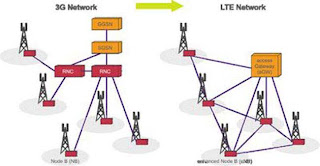What is LTE?
LTE stands for Long Term Evolution communications standard that is a high level of wireless data access based on GSM / EDGE and UMTS / HSPA ...
https://findgadgetreview.blogspot.com/2012/01/what-is-lte.html
LTE stands for Long Term Evolution communications standard that is a high level of wireless data access based on GSM / EDGE and UMTS / HSPA where there was an increase in capacity and speed using a new modulation technique.
LTE format was first proposed by NTT DoCoMo of Japan and has been adopted as international standards. LTE service was first opened by Osla and TeliaSonera company in Stockholm on December 14, 2009. That was followed by the United States and Japan in 2010.
LTE is a standard for wireless data communications technology and an evolution of GSM / UMTS standards. The goal of LTE is to enhance the capacity and speed of network wireless data using a technique DSP (Digital Signal Processing) and modulation which was developed at the beginning of the new millennium.
As a high-level technology, LTE is capable of downloading speeds up to 300 Mbps and 75 Mbps for uploading. LTE supports scalable carrier bandwidth, and supports Frequency Division Duplexing (FDD) and Time-Division Duplex (TDD). Flat IP-based LTE network architecture called Evolved Packet Core (EPC), which is designed to replace the GPRS Core Network and support the seamless exchange for voice and data compared with earlier network technologies exist such as GSM, UMTS and CDMA 2000.
LTE format was first proposed by NTT DoCoMo of Japan and has been adopted as international standards. LTE service was first opened by Osla and TeliaSonera company in Stockholm on December 14, 2009. That was followed by the United States and Japan in 2010.
LTE is a standard for wireless data communications technology and an evolution of GSM / UMTS standards. The goal of LTE is to enhance the capacity and speed of network wireless data using a technique DSP (Digital Signal Processing) and modulation which was developed at the beginning of the new millennium.
As a high-level technology, LTE is capable of downloading speeds up to 300 Mbps and 75 Mbps for uploading. LTE supports scalable carrier bandwidth, and supports Frequency Division Duplexing (FDD) and Time-Division Duplex (TDD). Flat IP-based LTE network architecture called Evolved Packet Core (EPC), which is designed to replace the GPRS Core Network and support the seamless exchange for voice and data compared with earlier network technologies exist such as GSM, UMTS and CDMA 2000.


